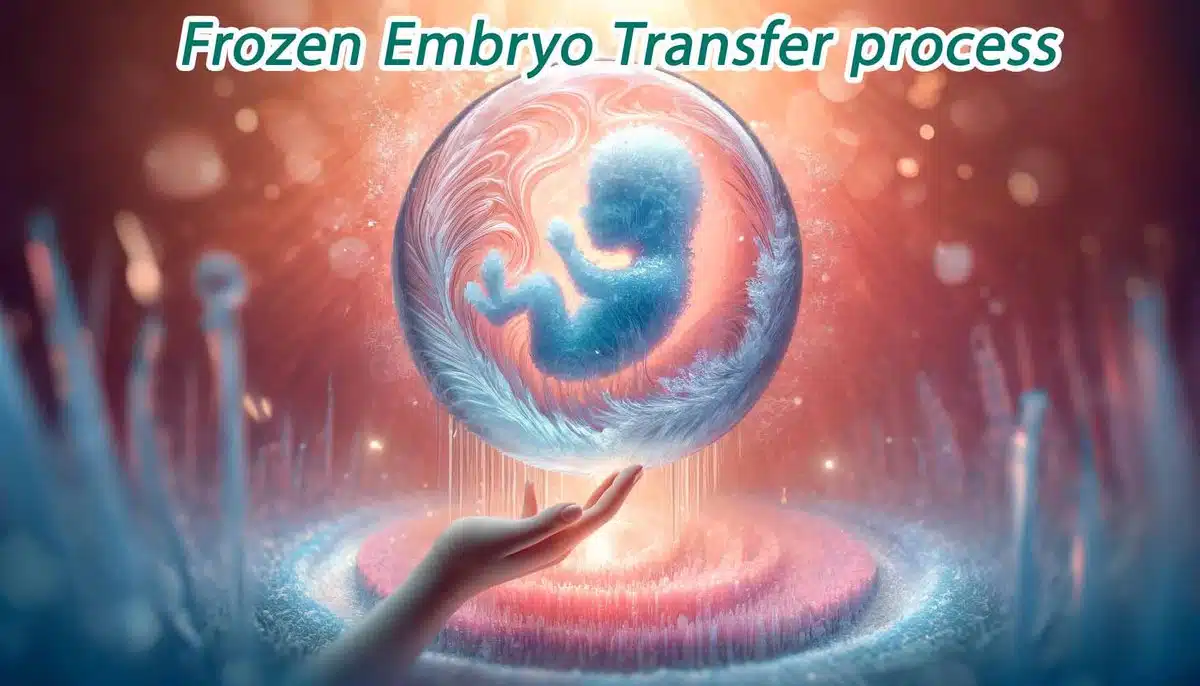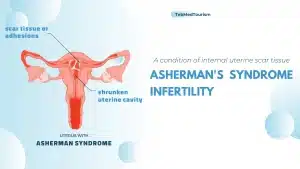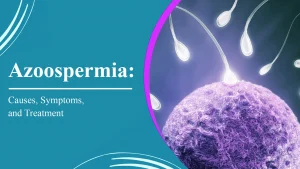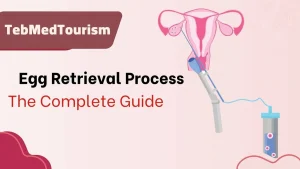In the process of frozen embryo transfer, it is very important to have a correct calendar of your monthly menstrual cycle. Because this process will be done completely based on the date of your period and ovulation. This timing optimizes the chances of embryo implantation and conception.There are two types of FET process based on menstrual cycle:
- Natural cycle
- Hormone replacement cycles
For women undergoing natural frozen embryo transfer (FET) IVF cycles, embryo transfer can take place during a typical ovulation timeframe following their most recent period. However, for women receiving hormonal support during FET IVF, the embryo transfer can happen approximately 3-4 weeks after their most recent period. There is no medication are administered in this type of frozen embryo transfer natural cycle.
It is better to know that this whole path should be under the supervision of a doctor, but what about people who have irregular periods? This is where hormone replacement will come in handy! We have to create an artificial period cycle in these people so that we can have a regular monthly cycle, then planning for frozen embryo transfer can be done well.
The success rates in achieving pregnancy are comparable to those in natural cycle frozen embryo transfer (FET). In some cases, we may suggest a practice cycle prior to the actual FET cycle. This allows us to conduct an endometrial biopsy to verify that the medication doses are promoting the appropriate growth of the uterine lining.
Frozen Embryo Transfer Step by Step
There are two main types of frozen embryo transfer. Natural and hormone replacement cycle.
Frozen Embryo Transfer Step by Step: Natural cycle Steps
Natural cycle has no complicated steps; No medication is given during this approach. Instead, we closely monitor the natural ovulation process and determine the exact day of ovulation through a combination of ultrasound scans, blood tests, and urine tests. The embryo transfer is scheduled during the optimal implantation window. During the FET procedure, the embryos are thawed, their viability and quality are assessed, and then they are transferred into the uterus.
1st day: It refers your first day of period and you should inform that to your fertility specialist.
2nd – 4th day: blood sampling and ultrasound scanning will do in these days. In natural cycle, you will not need to take medication and hormones. In these days, by conducting some tests, the doctor plans to examine your lining, and you should visit your doctor again in a week to continue the procedures.
10th – 14th day: It is imperative that your endometrial lining exhibits enhanced thickness while simultaneously witnessing the development of a dominant ovarian follicle. In the realm of reproductive health, your esteemed reproductive endocrinologist may exercise the option of patiently awaiting the natural initiation of the ovulation process within your body. This phenomenon, commonly referred to as a surge in LH hormone levels, is adeptly identified by means of comprehensive blood tests.
15th – 18th day: Upon the administration of your trigger shot, or alternatively, following the occurrence of ovulation, the commencement of progesterone suppositories awaits you on the subsequent day. Following this pivotal step, the embryo transfer procedure shall be meticulously arranged as per the following timelines:
– For individuals undergoing a blastocyst transfer, the sixth day of progesterone suppositories shall be designated for the procedure.
– Conversely, for those undergoing a cleavage stage Day 3 embryo transfer, the fourth day of progesterone suppositories shall be carefully selected for the transfer to take place.
19th – 24th days: In this day, embryo transfer will be done! This procedure will just take about 20 minutes. To ensure optimal visualization and guidance, it is advisable to arrive with a full bladder. The presence of a full bladder aids in effectively navigating the catheter carrying the precious embryo into the sanctuary of your uterus.
Frozen Embryo Transfer Step by Step: Hormone replacement cycle Steps
This procedure has 3 main steps and 2 side steps, so, there is 5 steps for frozen embryo transfer. Many clinics around the world, do not do side steps but these steps are so impactful in increasing the success rate of frozen embryo transfer. But let us give you the hope that these two steps will be done in TebMedTourism!
These 2 side steps are, consultant! 7/24 consultation before and after medication and embryo transfer.
Here is the frozen embryo transfer process step by step:
1. Pre-medication consultation
2. Hormone therapy (progesterone and estrogen)
3. Embryo transfer
4. Hormonal studies and pregnancy test
5. Follow-up consultation
In this topic we will just tell you about medical procedure day by day.
1st day: Like natural cycle, this day refer to your first day of menstrual cycle and all of procedure will be done based on this day.
2nd – 4th day: You will begin estrogen supplementation on this day. thickness of your uterus and ovarian follicle growth prevention is important in this time. You will come back in about a week or so to check on the progress of your lining.
10th – 14th day: Once your uterine lining demonstrates the anticipated growth, an exciting milestone awaits: the initiation of progesterone supplementation. This remarkable phase typically entails the administration of intramuscular progesterone injections, accompanied by the possibility of utilizing progesterone vaginal suppositories to enhance the experience.
15th – 18th day: Once your physician determines that your uterine lining meets the necessary criteria, you will commence the administration of intramuscular progesterone shots. On the first day, you will administer two progesterone injections, followed by a once-daily regimen thereafter.
The subsequent step on your fertility journey involves scheduling the embryo transfer procedure, tailored to the development stage of your embryo:
– If you are undergoing a blastocyst stage embryo transfer, it will be scheduled on the sixth day of progesterone injections.
– For a cleavage stage Day 3 embryo transfer, the procedure will take place on the fourth day of progesterone injections.
19th – 24th days: Congratulation! You can do frozen embryo transfer in this day!
The good news is that after 9 to 11 weeks after embryo transfer, pregnancy test will be done and so far, all our clients have become pregnant during this period and many of them are waiting to taste the sweet taste of parenthood!
In conclusion, the timing of frozen embryo transfer (FET) is pivotal, whether it’s coordinated with a natural menstrual cycle or a hormone replacement cycle. The natural cycle approach leverages a woman’s innate ovulatory schedule, requiring monitoring but no medication, offering a synchronized environment for embryo implantation. Hormone replacement cycles, beneficial for those with irregular periods, meticulously create an optimal uterine environment through controlled hormonal support. Both methods have shown comparable success rates. The choice hinges on individual health profiles and preferences, underpinned by medical advice. Ultimately, both pathways hold the promise of parenthood, symbolizing hope and scientific advancement in reproductive health.
Frequently Asked Questions About Frozen Embryo Transfer:
What is the step for frozen embryo transfer?
The frozen embryo transfer (FET) process of IVF involves preparing the uterus for implantation and transferring a thawed embryo into it. Depending on the regularity of your periods, there are two approaches: natural and hormone replacement cycles. No drugs are used in the natural cycle; ovulation is monitored with tests and embryo transfer is planned according to the natural cycle. Hormone replacement cycles involve the administration of hormones to simulate a cycle, ensuring that the uterus is ready for implantation. Both methods require careful timing and follow-up by a fertility specialist. The purpose of the procedure is to optimize the chances of pregnancy by transferring the embryo during the optimal implantation window.
How many days after your period is a frozen embryo transfer?
The timing of a frozen embryo transfer (FET) after a period depends on the chosen method. In natural cycles, the transfer typically occurs around 15 to 18 days post-period, aligning with natural ovulation. For hormone replacement cycles, it’s usually scheduled 15 to 18 days after beginning hormone therapy, following the period.
How many days before FET do you start progesterone?
Exogenous progesterone can be started 2-5 days before the planned transfer date, depending on the stage of the frozen embryo.
What is the ideal progesterone level before frozen embryo transfer?
The ideal progesterone level before frozen embryo transfer (FET) is not generally defined as exact numbers, as it can vary depending on individual treatment plans and protocols. However, doctors usually aim to ensure that progesterone levels are sufficient to support the endometrium and create an optimal environment for the embryo to implant. Monitoring and adjustments by fertility specialists ensure that levels are favorable for successful transfer. A serum progesterone concentration above a certain threshold (30-35 nmol/L) at the time of blastocyst transfer generally improves continued pregnancy in artificial cycle FET (AC-FET). However, some studies have shown that progesterone levels can also become too high.
On which day of cycle is frozen embryo transfer done?
Frozen embryo transfer is usually done on days 19-24 of the menstrual cycle. during the day during normal periods and, therefore, during periods of hormone replacement after initiation of progesterone therapy.
Can you have too much progesterone before embryo transfer?
Serum progesterone levels greater than 20 ng/dL on the day of embryo transfer are associated with lower live births and higher miscarriage rates.








